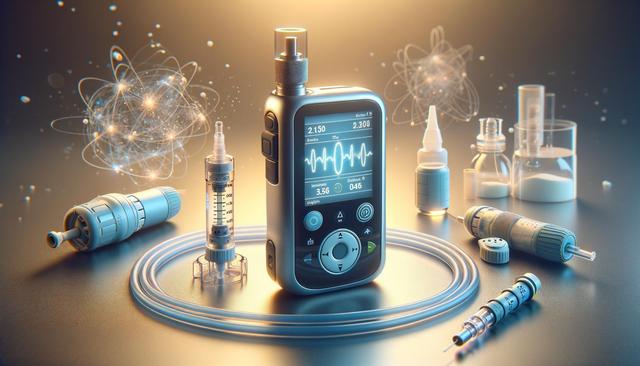What is an Insulin Pump and How Does It Work?
An insulin pump is a small, computerized device that delivers insulin continuously throughout the day and night. It mimics the way a healthy pancreas releases insulin and is often worn on the body, typically clipped to a waistband or carried in a pocket. The pump delivers rapid-acting insulin through a thin tube (called a cannula) that is inserted under the skin. This method allows for both basal (background) and bolus (mealtime) insulin delivery, providing a more accurate and convenient way to manage blood glucose levels compared to multiple daily injections.
Insulin pumps are programmable, allowing users to adjust insulin doses based on their lifestyle, meals, or activity levels. Many modern pumps also integrate with continuous glucose monitors (CGMs) to help users make informed decisions. The goal of using an insulin pump is to maintain blood sugar levels within a target range, thereby reducing the risk of long-term complications associated with diabetes.
Benefits of Using an Insulin Pump
Many individuals with diabetes find insulin pumps to be a valuable tool in their daily management routine. Some of the notable benefits include:
- Greater flexibility in meal timing and food choices
- Improved blood glucose control and fewer fluctuations
- Reduced number of needle sticks and injections
- Customizable settings for different times of the day or activity levels
In addition to these practical advantages, insulin pumps can improve the overall quality of life for users. They allow for more discreet insulin administration and help minimize the chances of severe highs and lows. For people who lead active lifestyles or have unpredictable schedules, the adaptability of insulin pumps can be especially beneficial.
Considerations Before Choosing an Insulin Pump
While insulin pumps offer many advantages, they may not be suitable for everyone. It’s important to consider various factors before making the switch from traditional insulin therapy. These include:
- Willingness to wear a device continuously
- Comfort with using technology and troubleshooting devices
- Initial and ongoing costs, including supplies and maintenance
- Training and support from healthcare providers
It’s crucial to work closely with a healthcare team to evaluate whether an insulin pump aligns with your personal health needs and lifestyle. Some people may find injections more manageable, while others may benefit from the tighter control that a pump can offer. Understanding the trade-offs involved is key to making an informed decision.
Daily Life with an Insulin Pump
Living with an insulin pump involves some adjustments, but many users find the transition worthwhile. Daily routines may include monitoring blood glucose more frequently, maintaining good skin hygiene at the infusion site, and regularly changing infusion sets. Typically, infusion sets are changed every two to three days to maintain insulin effectiveness and reduce the risk of infection.
For those who are active or travel often, insulin pumps offer increased flexibility. However, users need to be prepared for situations like device malfunctions or dislodged infusion sets. It’s wise to always carry backup insulin and supplies. Additionally, understanding how to respond to alarms and alerts from the pump is essential for safety and effective glucose management.
Support systems such as mobile apps, user communities, and educational resources can make pump usage more manageable. Many people find that once they adapt to the device, it becomes a natural part of their daily routine.
Advancements in Insulin Pump Technology
Recent advancements in insulin pump technology have led to significant improvements in diabetes care. Integration with continuous glucose monitors (CGMs) now allows for semi-automated insulin delivery, often referred to as hybrid closed-loop systems. These systems can automatically adjust insulin delivery based on real-time glucose levels, reducing the burden on users and improving glucose control.
Other innovations include:
- Touchscreen interfaces and smartphone connectivity
- Smaller, more discreet devices
- Improved battery life and charging capabilities
- Enhanced data analytics and reporting tools
These features not only make insulin pumps more user-friendly but also empower individuals to take greater control of their diabetes management. As technology continues to evolve, we can expect even more personalized and efficient options in the future.
Conclusion: Is an Insulin Pump Right for You?
Insulin pumps can be a powerful tool for individuals looking to manage their diabetes with more precision and flexibility. By delivering insulin in a way that closely mimics the body’s natural rhythm, they help users achieve better glucose control and potentially reduce the risk of complications. However, the decision to use an insulin pump should be based on a thorough discussion with your healthcare team, considering your daily habits, comfort with technology, and personal health goals. With the right support and information, many people find that insulin pumps play a valuable role in enhancing their quality of life and long-term health outcomes.




Leave a Reply